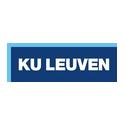In short
This project identifies virus-host interactions at the early stages of infection and unravels their molecular basis, providing fundamental novel insights in virology. The project consortium brings together a range of internationally recognised Belgian virologists (human and animal virology). Sciensano’s laboratories examine the morphology and distribution of the different receptors of the virus group (Myxovirus) causing for ex. common cold, avian influenza and Newcastle disease. They also provide specialised services in electron microscopy to the consortium.
Project description
Viral infections have caused an enormous burden, both in human and veterinary medicine. Constant exposure to viral infections has driven host evolution and continues to provide some of the most pressing global health challenges. The outcome of the infection, of a naive host by a virus, relies on key virus-host interactions that occur early after the first contact between virus and host. However, as these events pre-date clinical symptoms, they tend to be little studied and are often poorly understood. Host entry itself is far from straightforward. In order to be able to infect cells at the portal of entry, most viruses must first cross extracellular barriers such as mucus. Next, they need to interact with the appropriate receptors, hijack cellular internalization and transport mechanisms, deregulate signaling pathways, activate cellular enzymes, deliver their genome to the right cellular compartment, exploit the cellular machinery to produce progeny virions and at the same time evade the innate immunity. Only then can they spread to secondary sites and accomplish a successful infection.
The consortium will initiate and facilitate interactions (during the IAP program and beyond) that will create an environment to keep the Belgian virology at the forefront of international research. These include:
- establishing a virtual lab environment in which fellows of the different partners will be able to work and interact
- organising collaborative workshops between the partners to promote the education and advancement of young scientists
- promoting lasting links between Belgian virologists through the launching of a “Belgian Society of Virology” that will be networked to existing international virology organisations
The scientific program of Sciensano in this projects examines the early stages of infection of myxoviruses. Myxoviruses (from Greek myxa = mucus) represent any of a group of medium-size enveloped ribonucleic acid viruses with a high affinity for mucins. After penetrating the mucus-barrier, the entry of these enveloped viruses into the cell occurs by fusion of the lipid bilayers of the virus and the cell. Because they apply different mechanisms of entry, myxoviruses have been subdivided into orthomyxoviruses and paramyxoviruses. This historical distinction remains valid as insight has grown. The early stages of infection of orthomyxoviruses, like avian influenza (AI), and paramyxoviruses, like Newcastle disease virus (NDV), are governed by the glycoproteins (gp) with similar functions, anchored in their envelope. The respective haemagglutinin (H) and haemagglutinin-neuraminidase (HN) attachment gp recognize similar sialic acid receptors on their host cells. However, NDV enters the cell mainly by pH-independent, F-gp-mediated fusion at the cell surface, while AI is internalized by the endocytic pathway and pH-dependent fusion occurs in the cell. Many viral fusion proteins contain both receptor-binding and fusion activities, suggesting a straightforward model indicating how fusion is triggered by receptor binding. Nonetheless, the separation of these two functions in paramyxoviruses makes the control of fusion triggering more complex. Thus, it is extremely important that triggering is properly regulated both spatially and temporally but the details of these interactions are still under investigation, and may vary between paramyxovirus strains.
The questions that are addressed aim at gaining more insights into the morphology and distribution of the different gp of myxoviruses, represented by AI and NDV, and at understanding more precisely how they interact in the early stage of infection (attachment-fusion). A better knowledge of these processes and comparison with mammalian models should help the development of new therapeutics to strengthen the mucus barrier and block replication and spread in epithelial cells.
The main objectives are:
- to examine the morphology and distribution of the different glycoproteins of myxoviruses, represented by avian influenza (AI) and Newcastle disease virus (NDV) by ELISA, immunofluorescence, western blot, immunogold electron microscopy (EM) and cryo-EM
- to examine the interaction of myxoviruses with their host in the early stages of infection (attachment-fusion) by
- development of a TEM sample preparation method preserving the structure of the mucus layer of the epithelial surfaces of the diverse experimental models
- developing a detection method for labelling GFP with immunogold in ultra-thin sections followed by TEM imaging
- development of an avian model system to investigate the early stage of infection of myxoviruses
In addition, services and expertise in electron microscopy is provided to the partners of the BELVIR consortium, including:
- evaluation of the purity, morphology and concentration of virus samples by negative staining
- evaluation of the morphogenesis and virus production of virions in ultra-thin sections
- detection and quantification of epitope expression and localization by immunogold labelling and TEM
Sciensano's project investigator(s):
Service(s) working on this project
Partners







